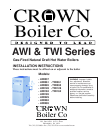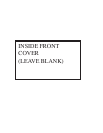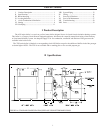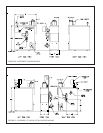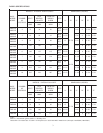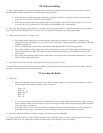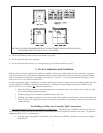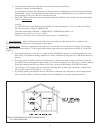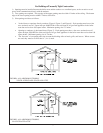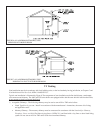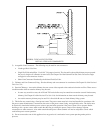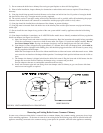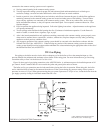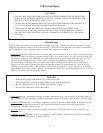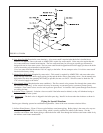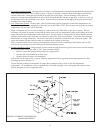
6
III Before Installing
1) Safe, reliable operation of this boiler depends upon installation by a professional heating contractor in strict accordance
with this manual and the requirements of the authority having jurisdiction.
• In the absence of an authority having jurisdiction, installation must be in accordance with this manual and the
National Fuel Gas Code, ANSI Z223.1-latest edition.
• Where required by the authority having jurisdiction, this installation must conform to the Standard for Controls
and Safety Devices for Automatically Fired Boilers (ANSI/ASME CSD-1)-latest edition.
2) Make sure that a properly sized chimney is available which is in good condition. Consult the authority having jurisdiction,
Part VI of this manual, and the National Fuel Gas Code for additional information on venting requirements.
3) Make sure that the boiler is correctly sized:
• For heating systems employing convection radiation (baseboard or radiators) use an industry accepted sizing
method such as the I=B=R Heat Loss Calculation Guide (Pub. #H21 or #H22) published by the Hydronics Institute
in Berkeley Heights NJ.
• For new radiant heating systems refer to the radiant tubing manufacturer’s boiler sizing guidelines.
• For systems including a Crown Mega-Stor indirect water heater, size the boiler to have either the DOE Heating
Capacity required for the Mega-Stor or the net rating required for the heating system, whichever results in the
larger boiler.
• For systems that incorporate other indirect water heaters, refer to the indirect water heater manufacturer’s instruc-
tions for boiler output requirements.
4) Make sure that the boiler received is configured for the correct gas (natural or LP).
5) Boilers built for installations at altitudes above 2000 ft. require different burners and main burner orifice. Make sure that
the boiler is configured for use at the correct altitude.
IV Locating the Boiler
1) Clearances:
• Observe the minimum clearances shown below. These clearances apply to all combustible construction, as well as
noncombustible walls, ceilings and doors. Also see Figure 2.
Front – 18”
Left Side – 6”
Right Side – 6”
Rear – 6”
Top – 18”
• A 24” service clearance from the jacket is recommended on the left, right, and front of the boiler. These clearances
may be reduced to those shown in Figure 2, however servicing the boiler will become increasingly difficult as these
service clearances are reduced.
• If the right side 24” service clearance is reduced, adequate clearance must be maintained to easily read both the
gauge and the limit control. Alternatively, access to the gauge and limit may be provided using a door
2) The boiler must be installed on a hard level surface. This surface may be combustible.
3) Do not install this boiler in a location where gasoline or other flammable vapors or liquids will be stored or used. Do not
install this boiler in an area where large amounts of airborne dust will be present, such as a workshop.
4



